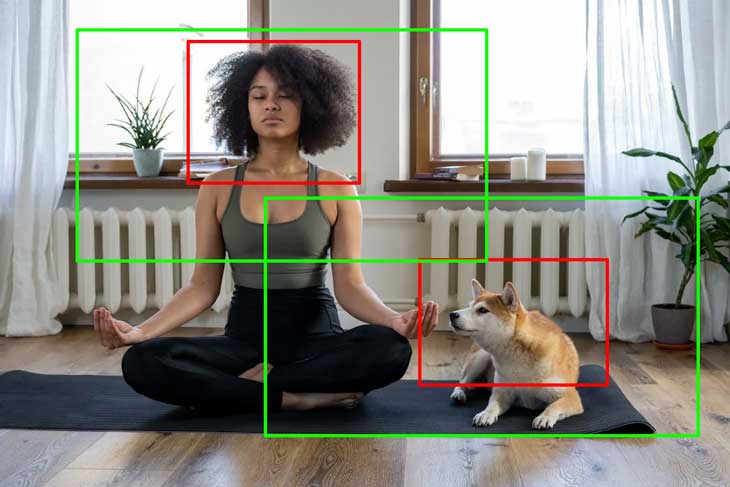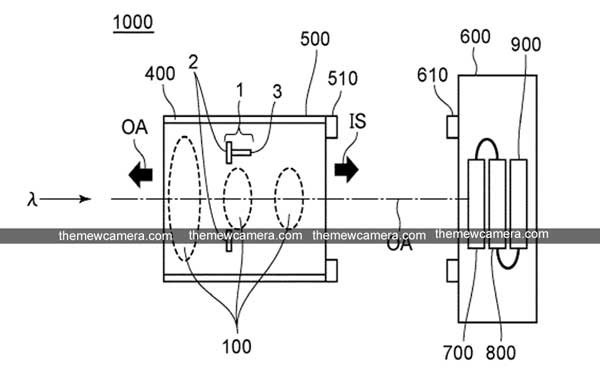Join More Than 50,000+ Subscribers and get latest camera news and rumors
NEW CAMERA VIDEOS ON YOUTUBE
|
By admin, on June 6th, 2025

Canon is working on a constant aperture-based zoom lens for APS-C mirrorless cameras. According to the latest patent available at the Canon Japan Patent Office, the Canon research and development team of Canon is working on the RF-S 18-50mm F4 IS STM lens. In general, Canon takes 2 to 3 years to turn the patent into a real-world product. So if Canon is planning to bring this lens in the market, even though, we have to wait.
Canon RF-S 18-50mm f/4 IS
- Focal length: 18.54-52.02
- F-number: 4.10
- Half angle of view: 33.06-14.50
- Image height: 13.66
- Total length: 130.47
- Back Focus: 14.72-14.72
Stay tuned for more updates coming
Browse more Canon Patents
Support us – Use or affiliate link Amazon.com | B&H Store for the next purchase u make – it helps us
Follow us on our social pages FACEBOOK | TWITTER | INSTAGRAM to get live Camera News + Canon Patent
Lens patent reveled by / credit – Canonrumor.com
Also see Canon Patent Advanced AI Auto Framing Technology

Below Canon Future Compact Camera – See more details here

By admin, on December 21st, 2024

We have already seen the auto area framing of the Sony cameras that have been popular quite a bit among content creators, and the auto area framing is typical, as we have seen, and now works on a single subject. At the same time, it has multiple boxes, typically three different sizes available: one is small, medium, and large. Once you select one of the boxes, the camera automatically frames your subject and crops it in the video’s final version, so it seems like someone is shooting your video. It is really helpful to content creators, those who shoot with wide-angle lenses and create videos and vlogs of their daily life routine, or, let’s say, their cooking videos. In this specific area, the auto area AI framing works very well.
Canon AI Auto Framing Tech Tracks, Crops, and Save

We recently saw a patent stating that Canon is also working on auto AI framing technology. In this technology, the camera automatically frames the subject depending on the user’s choice and saves cropped portions of the video to the SD card (of your choice), or you can say as a final product.
After looking at the details, it is very clearly visible the camera will save multiple video clips of the same video by cropping in on the selected multiple subjects in a single frame. It might depend on the user which clip they want to keep and wish to delete. The other option is they can tap on the subjects, either subject A or B, so that the camera will only save the clip of the subject that has been selected by the user among the multiple subjects present on the screen.
Canon Updated Menu System with AI Auto Framing


Canon AI Auto Framing Coming in Canon R6 Mark III or Canon R7 Mark II?
We may see the AI auto-framing feature of the Canon cameras in the upcoming Canon R6 Mark III and the Canon R7 Mark II cameras since it’s not a kind of hardware thing. In general, when Canon does a hardware patent, it generally takes 2 to 3 years. Still, since this is a software-based patent and the working principle of the AI auto-framing is solely dependent upon the DIGIC accelerator chip present inside Canon cameras, once introduced with the Canon R6 Mark 3 as well as R7 Mark 2, later on, these updates will be processed over the cameras with an AI accelerator chip inside them.
Even in the screenshot of the menu that I shared with you, you can clearly see the camera has dual card slots inside it. That indicates none of the entry-level cameras will have these features. As of now, only the cameras with the AI accelerator chip and dual card slots, which indicate a professional body, will have the AI auto-framing capability.
Support us – Use or affiliate link Amazon.com | B&H Store for the next purchase u make – it helps us 🙂
By admin, on November 16th, 2024
After reading this patent, we were really very much surprised that Canon is still working on their compact cameras. Specifically, I am talking about the G7 X series STYLE compacts, which were made for content creation and photography. The new generation of G7 X-style compacts in the patent features a unique electronic viewfinder design that we have never seen before. And Even some of them features DUAL DISPLAY along with EVF.

A Bold Setup Design
After closely looking at all the patents, I feel that Canon wants to create a big leap with the help of their AI tech to reintroduce compact cameras with a massive comeback. Canon seems intent on integrating the best of both worlds, such as an advanced electronic viewfinder in a compact camera alongside a versatile flip display screen.

Why This Product Blew Our Minds
This patent was completely unexpected. After reading it, it blew our minds to see Canon’s jaw-dropping innovative designs from Canon engineers. Canon is creating a variety of designs, such as a retractable EVF system, one that slides out, and another that rotates parallel to the camera body, Dual Display System based cameras. These different designs show that Canon is working on multiple prototypes of compact cameras.
So, Now We came to know that the CANON research and development team still working on innovative compact cameras. As we reported earlier, the demand for compact cameras is again on the rise. Right now, even Canon’s older compact models still in production cover 60% of the compact market in Japan. It’s exciting to see Canon compact cameras making a return, with more innovative designs and unique features.
What’s Next for Canon’s Hybrid Compact Cameras?
The patent makes it very clear that these cameras are being designed for modern-day vloggers and photographers. Canon is pushing boundaries by creating cameras with huge market potential.
Canon is Gearing Up for the Future
With advancements in AI technology, high-performance chips, and the Canon DIGIC accelerator (Canon’s own home-grown AI chip), Canon is going back to basics to develop a compact camera that is portable, powerful, and blogging-ready. At the same time, it will be an excellent tool for photographers.
Canon seems to be creating a compact hybrid camera setup that everyone—whether a content creator or a photographer—will wish to have.
also see – Canon Upcoming Cameras 2025 – See more Canon patents
Application JP20XX events 2023-04-20
Application filed by Canon In c2024-10-31
Publication of JP20XX
Status Pending
Information available on request
Get LIVE RUMORS –> FACEBOOK | TWITTER | INSTAGRAM to get live news + Canon rumors 24X7
The post Announced: Canon Compact Camera Breakthrough: This Patent Hints at the Ultimate Hybrid Design! appeared first on thenewcamera.com
By admin, on August 25th, 2024

Canon Retro Camera Rumor first published on March 2024
The patent describes the importance of having more contact pins in an advanced fixed LENS Lens camera as well as in a Mirrorless Mount, So we may expect a RETRO APS-C Compact camera from Canon to compete against the Fuji X-100 VI as well as they may also consider the upscaling contact point in RF-Mount in near future.

having more electronic contacts in the camera mount or lens mount is crucial for reliable communication and control between the camera body and the lens.
- The patent talks about both interchangeable lens systems and fixed lens systems, electronic contacts are key to transmitting data, power, and control signals. These include commands for autofocus, image stabilization, aperture control, and other functions.
- The more sophisticated the lens becomes in the near future (e.g., with advanced image stabilization, autofocus motors, etc.), the more electronic connections are needed to handle the increased data and power requirements.
- The patent describes (Image below) the interchangeable lens systems, the camera mount (600) and lens mount (500) need precise and reliable electronic contacts to ensure consistent communication. In fixed lens systems, similar electronic connections exist internally without the need for detachable mounts.
So, increasing the number of electronic contacts in the mount (for interchangeable lenses) or within the fixed lens system can improve performance and reliability.
From the Desk of TNC Editor –
The patent text clearly shows Canon is working to enhance the communication between the lens and the body of a Fixed lens camera unit, right now the are putting entire focus on developing a high-end compact camera, later on, they can also use the same enhanced communication tech to their RF-Mount in near future if Lenses become more and more sophisticated and demands more power and data.
 Overview of the Camera System: Overview of the Camera System:
- The optical device 500 is shown as part of a camera system 1000, which includes a camera body 600 and an interchangeable lens. In a fixed-lens camera, the optical device 500 is integrated.
Key Components of the Optical Device:
- The optical device 500 consists of a lens optical system 100, a main circuit board 2, a sub-circuit board 3, and a lens barrel 400.
- The lens optical system 100 includes multiple lenses aligned along an optical axis (OA).
- The circuit module 1, which houses the main and sub-circuit boards, is fixed within the lens barrel 400.
What does the Patent Says
- The text primarily discusses the optical device (500) in a camera system (1000), which can be either an interchangeable lens or a fixed lens. It mentions that while the example shows an interchangeable lens, the system is equally applicable to a fixed lens camera setup.

In a fixed lens camera, the optical device 500 is integrated and not removable from the camera body. The connection mechanisms (510 and 610) used for attaching lenses in interchangeable systems can be omitted in fixed lens setups.
Summary of the Patent
- The more sophisticated the lens becomes it demands more and more data and power (e.g., with advanced image stabilization, autofocus motors, etc. ), the more electronic connections are needed to handle the increased data and power requirements.
- So, increasing the number of electronic contacts in the mount (for interchangeable lenses) or within the fixed lens system can improve performance and reliability.
Get LIVE RUMORS –> FACEBOOK | TWITTER | INSTAGRAM to get live news + Canon rumors 24X7
By admin, on August 25th, 2024
We all know that Canon is in partnership with Apple, as they are making special spatial Lenses for their Apple Vision PRO, and their content can be directly used on Apple iPhone platforms and the VR headset for augmented reality purposes.

But no, Canon is not behind in the process of its virtual reality headset development program. They have silently announced the VR headset named MREAL X1, and now it looks like they are preparing to announce the second generation of the X2 VR headset.
First Impression
When we had this patent first, we thought that Canon was working on MREAL X2, But, after reading the document we have found that it’s a advanced type of electronic binocular telescope, especially one that can be worn like a head-mounted display.

Now the rear design of the same

Canon Patent Details
- The device is like a pair of binoculars with a camera and displays placed in front of your eyes.
- You can also record your video with a press of a button on the TOP RIGHT side of binoculars, plus a ZOOM TOUCH BAR, like the TOUCH BAR we have seen in the Canon EOS R camera
- Enhanced ACTIVE Subject Tracking by AI Chip, Once you have used AF LOCK on the subject the binoculars camera will TRACK automatically without making unnecessary head movements
- It uses sensors to detect the direction of your head and the direction your eyes are looking (line of sight).
- The problem with current devices is that even small head movements can shift the viewing area too much, especially when zoomed in. This can be uncomfortable for users.
- The invention solves this by deciding when to adjust the view based on head movements and when to keep it stable, making the experience feel more like looking with your natural eyes.
In short, it’s a smart system that makes viewing through these electronic binoculars smoother and more comfortable, minimizing unnecessary shifts in the image.
also see Canon SMAR Glass Patent published here
Canon Working on Foldable Display Vlogging Cameras
Support us – Use or affiliate link Amazon.com | B&H Store for the next purchase u make – it helps us
By admin, on August 25th, 2024
There is always a big challenge to manage the heat dissipation of the sensor when the sensor is floating, meaning when it is placed on an IBIS mechanism.

Canon has finally found a way to dissipate the heat from a floating sensor by introducing a breakthrough technology,. As you can see in the image, the coil structure represented in red is dissipating heat from the IBIS mechanism of the floating sensor by connecting it to the camera’s built-in heat dissipation system.

The “fixed part affixing region 302” is the part of the cooling structure attached to a fixed section inside the camera, specifically a plate at the back of the camera. This region helps secure the heat-dissipating member in place. It is designed to align with another movable region (304) when looking directly along the path that light travels through the camera (optical axis). The overall cooling structure connects these parts with flexible sections, allowing the camera’s moving parts to function smoothly while also helping to cool the imaging sensor effectively.

Get LIVE RUMORS –> FACEBOOK | TWITTER | INSTAGRAM to get live news + Canon rumors 24X7
By admin, on June 13th, 2024

We have some very unique lens patterns from Canon. The first lens is 15 to 60 mm f/2.8. This is being developed for Canon RF mount, most importantly the lens has inner zoom mechanism and from the overall details, it look like a part of the Canon L series lens with highest grade optics possible. The 15-60mm F2.8 lens is a very unique focal length, it will be nowadays more accepted than the 24-70mm focal length without a doubt., take a look at the details below

overview
- [Publication number] P2024079936
- [Release date] 2024-06-13
- [Name of invention] Zoom lens, and imaging device and imaging system having the same
- [Application date] 2022-12-01
- [Applicant]
[Identification number] 000001007
[Name or company name] Canon Inc.
- A zoom lens that has a high zoom ratio and a large aperture ratio, yet is compact, lightweight, and provides high image quality, and that allows high-speed zoom operation.
- [Background Art]
[0002]
There is a demand for a zoom lens that is compact and lightweight throughout its entire system, has excellent correction of chromatic aberration and other aberrations, and has high optical performance. There is also a demand for a zoom lens that has a short focal length at the wide-angle end, a large zoom ratio, a small F-number, a large aperture ratio, and is easy to manufacture. There is also a demand for a zoom lens that allows high-speed zoom operation.
- However
, the zoom lens described in Patent Document 1 has a tendency to have a large lens diameter due to its small F-number, and the large front lens diameter leads to an increase in size and weight. In addition, if the refractive power of the second lens group is increased in order to reduce the front lens diameter, it becomes difficult to achieve high image quality.
- The present
invention provides a zoom lens that has a high zoom ratio and a large aperture ratio, yet is compact, lightweight, and provides high image quality, and is capable of high-speed zoom operation.
In addition to the 24-105mm, examples of the inner zoom structure “15-60mm F2.8” and “22-80mm F2.8” are also included. The 15-60mm F2.8 looks very convenient. Details are unclear as to whether these will become the “F2.8 Z” series under consideration in the future, or whether they were born during the development process of the 24-105mm F2.8 in Aqua. (Although there are rumors that other Z series will appear) it is too early to expect their
Get LIVE RUMORS –> FACEBOOK | TWITTER | INSTAGRAM to get live news + Canon rumors 24X7
More about patent here
source asobi NET
|
KEEP THIS BLOG ALIVE - Support New Camera Buy Canon Lenses, Buy Music CD or Digital Camera at amazon it helps this site, and you do not pay anything extra, it is just a way to help support this site.

|











 Overview of the Camera System:
Overview of the Camera System:












